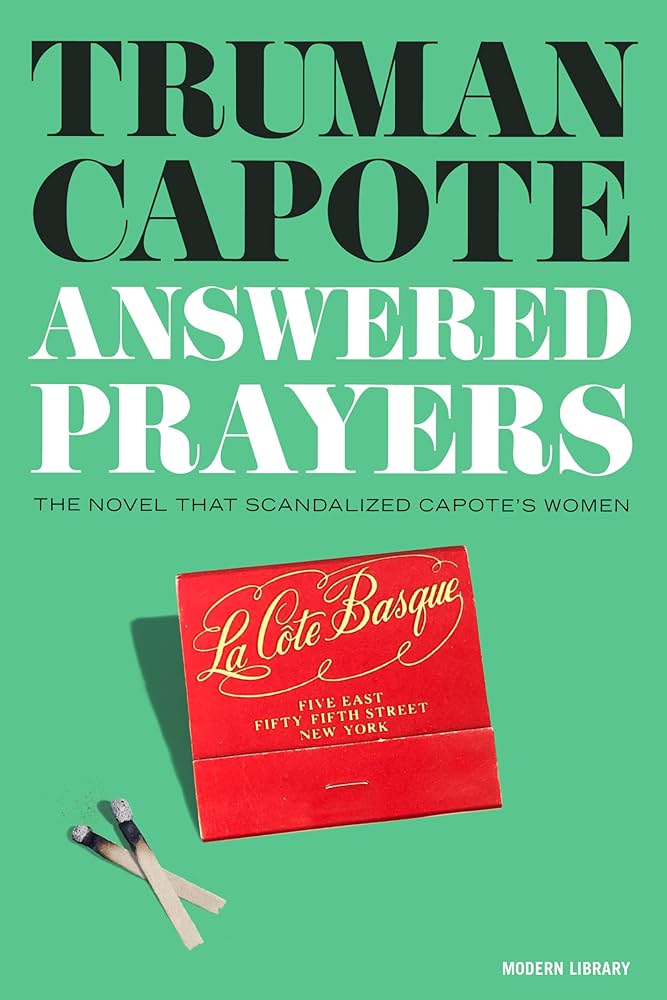Truman Capote Books: A Literary Legacy

Truman Capote (1924-1984) remains a seminal figure in American literature, celebrated for his captivating prose and pioneering contributions to both fiction and literary journalism. His works explore universal themes of isolation, human psychology, and the complexities of class, often infused with irony and compassion. From evocative Southern Gothic narratives reflecting his New Orleans roots to groundbreaking nonfiction that challenged traditional storytelling boundaries, Capote’s career spans decades, solidifying his status as a literary icon. This exploration delves into his major works, examining their genres, stylistic choices, thematic concerns, and enduring cultural impact.
The Evolution of Capote’s Literary Style: From Romance to Realism

The trajectory of Capote’s career reveals a fascinating interplay between two seemingly opposing literary styles: objective realism and romanticism. His earliest fiction leans heavily towards the romantic, characterized by intense, evocative prose and a focus on the inner lives of his characters. Instead of meticulously detailing a realistic social world, his early works concentrate on the psychological states of his characters, employing vivid imagery and potent symbols to convey their emotional turmoil.
In “The Headless Hawk,” for instance, the external world is almost entirely absent, overshadowed by the subjective experience of the characters. Similarly, “A Tree of Night” uses a gothic setting and archetypal journey to mirror the heroine’s descent into fear and self-doubt. “Miriam” explores the disintegration of an elderly woman’s sense of reality under the unsettling influence of a child. These early stories often draw comparisons to Edgar Allan Poe, reflecting Capote’s fascination with the psyche at its breaking point.

This romantic sensibility is central to his debut novel, Other Voices, Other Rooms. Young Joel Knox inhabits a vaguely defined social world, where the primary reality is the pervasive terror that surrounds and threatens him. The narrative unfolds episodically through a series of assaults on Joel’s mind, showcasing Capote’s mastery of creating intense psychic states. The work ultimately functions as a romantic moral parable, exploring themes of love, understanding, and the search for identity in a seemingly uncaring world.
However, as Capote’s career progressed, he demonstrated a growing interest in realism, culminating in his innovative approach to “nonfiction fiction.” Works like Local Color showcase a focus on surface detail and precise observation, while The Muses Are Heard captures the idiosyncrasies of his fellow travelers with detached wit.
The pinnacle of this evolution is arguably In Cold Blood, a masterful fusion of Capote’s contrasting literary tendencies. While maintaining a seemingly objective, journalistic approach, the novel subtly incorporates romantic elements, compelling the reader to empathize with Perry Smith’s plight. The novel transcends simple categories of good and evil, exploring the complex interplay of human nature within a larger, ominous cosmic drama.

Other Voices, Other Rooms: A Gothic Romance
Other Voices, Other Rooms, Capote’s debut novel, follows thirteen-year-old Joel Knox, sent to live with his estranged father at Skully’s Landing, a decaying plantation house. The house itself becomes a character, imbued with a sinister enchantment and gothic atmosphere reminiscent of William Faulkner and Carson McCullers. Joel’s journey to find his father is symbolic, a quest for love and understanding in a world seemingly incapable of providing either. The novel utilizes surreal imagery—a carnival scene, a nocturnal pursuit—to highlight the extremity of Joel’s fear and loneliness. The ambiguous ending, while leaving some questions unanswered, successfully creates a powerful, sustained mood of intense beauty and psychic drama. The novel’s strength lies in its sustained poetry of mood and evocative language. However, critics point to underdeveloped characters like Randolph, whose persona feels more like a pastiche than a fully realized individual.
The Grass Harp: A Fable of Freedom and Identity
The Grass Harp shifts from the intense isolation of Other Voices to explore the discovery of identity through relationships. Collin Fenwick, an orphan living with two eccentric aunts, finds himself drawn to a tree house, a symbol of freedom and imagination. The narrative features a blend of whimsy and poignancy, exploring themes of freedom versus restriction, with memorable characters like Judge Cool and his courtship of Dolly Talbo. While some plot contrivances and slapstick moments detract from the overall impact, the novel’s exploration of human connections and the search for self within a community elevate it beyond its narrative flaws.
Breakfast at Tiffany’s: A Glimpse into New York’s Underbelly
Breakfast at Tiffany’s, a novella, marks Capote’s transition to the literary landscape beyond the American South. Set in New York City, the story follows Holly Golightly, a captivating socialite with a mysterious past. The narrative utilizes a retrospective frame, reminiscent of The Great Gatsby, allowing the narrator to observe Holly’s unconventional adventures with a mix of nostalgia and loss. While Holly’s character has become iconic through the film adaptation, some critics argue that she remains underdeveloped. Nonetheless, the novella effectively captures the atmosphere of 1960s New York and its inhabitants.
In Cold Blood: A Groundbreaking Nonfiction Novel
In Cold Blood, Capote’s most celebrated work, broke new ground in literary journalism, establishing the “nonfiction novel” genre. The meticulously researched book chronicles the brutal murders of the Clutter family in Holcomb, Kansas, and the subsequent capture and trial of the perpetrators. Capote’s narrative technique employs cinematic elements, cutting between the perspectives of the killers and victims to build suspense and reveal the psychological depths of the crime. The book’s power lies not just in its chilling detail but also in its unflinching portrayal of the killers’ complex personalities, revealing their own deep-seated traumas and vulnerabilities. This blend of objective reporting and psychological insight continues to captivate and disturb readers, prompting ongoing discussions about the nature of truth, justice, and the human condition. While hailed for its impact and style, the accuracy of certain details within the narrative has been subjected to scrutiny in later years.
Answered Prayers: An Unfinished Masterpiece
Answered Prayers, Capote’s unfinished final work, generated significant controversy during its serialization. A satirical portrayal of New York’s elite, the novel follows the opportunistic writer P. B. Jones as he navigates the opulent and often morally ambiguous world of high society. While offering glimpses into the lives of real-life figures thinly veiled as fictional characters, the book’s fragmentary nature and gossipy tone mark a departure from Capote’s earlier achievements. The unfinished nature of the work, combined with the alienation of several of Capote’s social connections due to its frank portrayal of their private lives, resulted in its incompletion, leaving a lasting mark on both his reputation and literary legacy.
Truman Capote’s Enduring Cultural Impact
Truman Capote’s influence extends beyond his individual works. His innovative style of literary journalism, evident in In Cold Blood, paved the way for a new generation of writers who blurred the lines between fiction and nonfiction. His meticulously crafted prose and keen observational skills shaped the art of portraiture in both fiction and non-fiction works. His novels and short stories have inspired countless adaptations for film, stage, and television, further embedding his characters and themes within the collective cultural consciousness. His legacy is one of stylistic innovation, thematic depth, and a fearless approach to exploring the darker aspects of human nature. His life and work continue to captivate readers and inspire creatives across multiple mediums. The controversy surrounding Answered Prayers and the ongoing debates about the precise factual accuracy of In Cold Blood only serve to highlight the complexity and lasting impact of his literary achievements. The sheer volume of critical analysis and discussion that his work continues to generate stands as a testament to Capote’s indelible mark on the world of literature. Further exploration of his life and work can be found on Lbibinders.org.